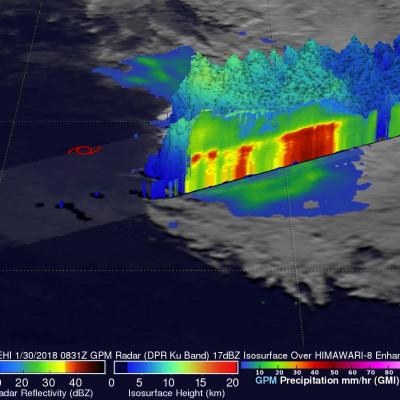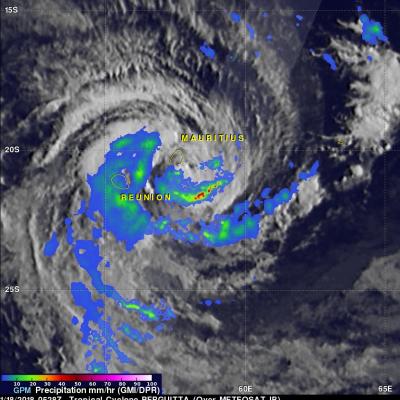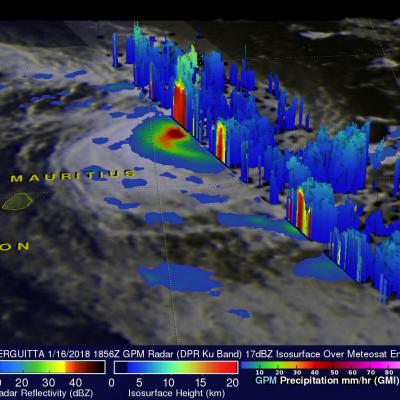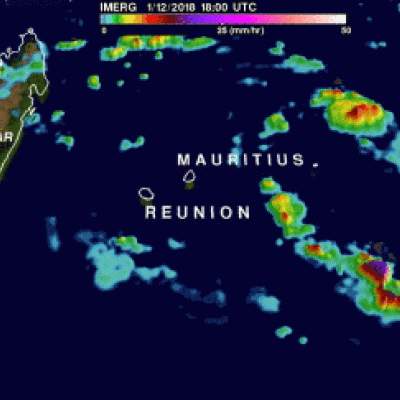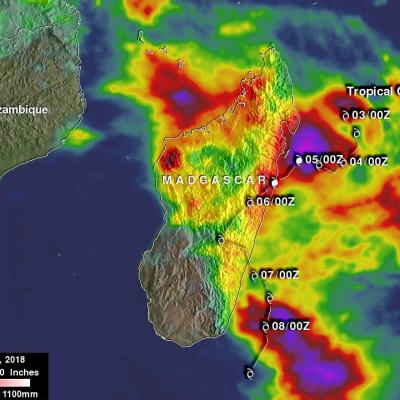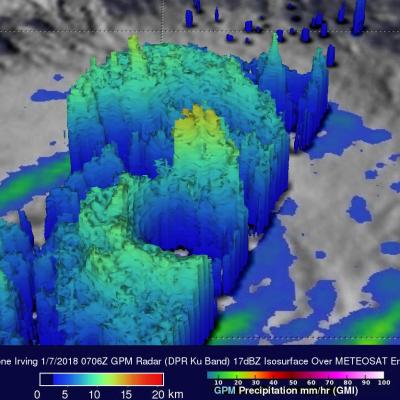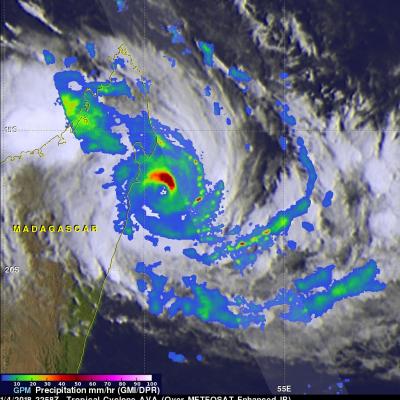GPM Examines Tropical Cyclone Gita Over Samoa
Recently formed tropical cyclone GITA was drenching Samo when the GPM core observatory satellite passed above on February 9, 2018 at 1426 UTC. Data collected by GPM's Microwave Imager (GMI) and Dual-Frequency Precipitation Radar (DPR) instruments showed the area and intensity of precipitation associated with the tropical cyclone. The area covered by GPM's radar swath is shown in lighter shades. GITA was producing heavy rainfall over a large area that included the islands. The center of the intensifying tropical cyclone was located just to the south of the islands. Rainfall in that area was





